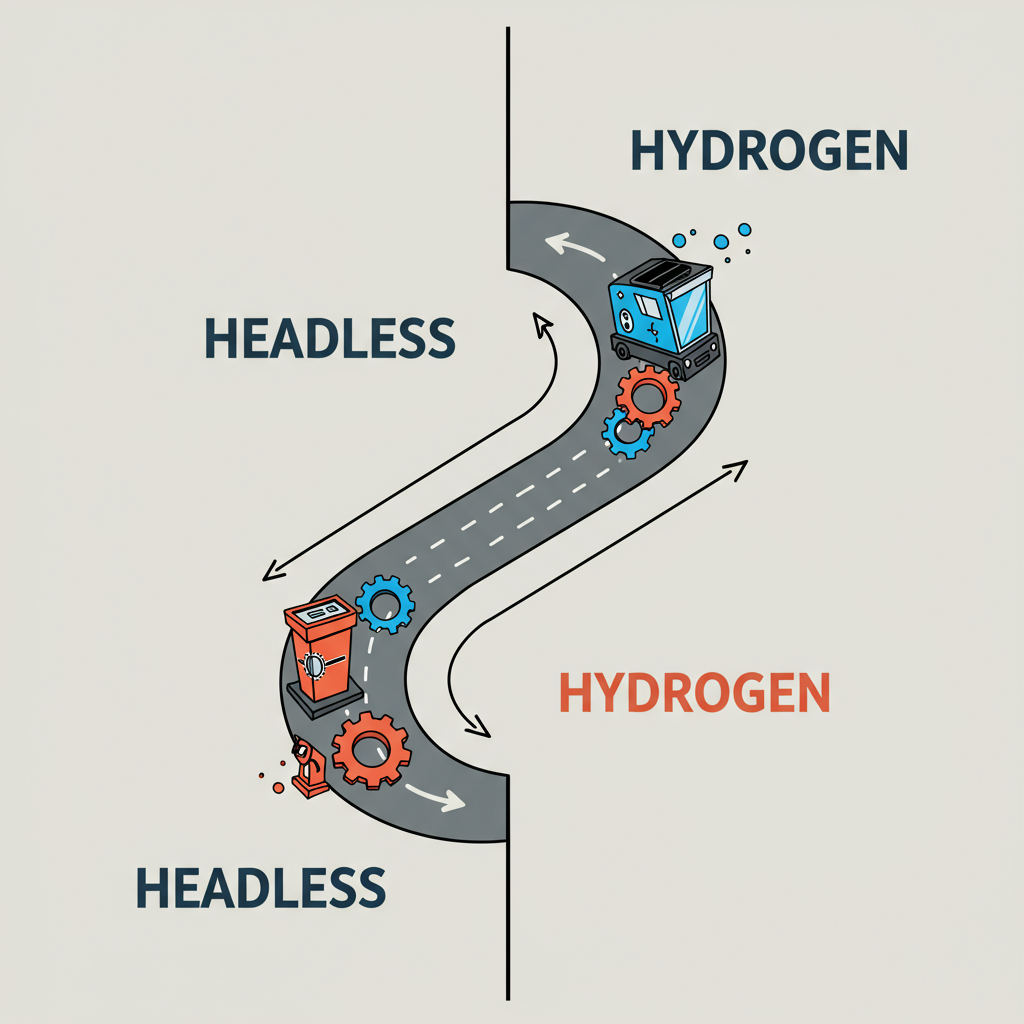As a merchant, understanding the nuances between traditional headless commerce and Shopify’s innovative Hydrogen framework is crucial for your online store’s success and scalability. Let’s break it down.
As a merchant in today’s rapidly evolving e-commerce landscape, I know the pressure to deliver exceptional customer experiences is immense. We’re constantly looking for ways to make our stores faster, more flexible, and truly unique.
Recently, a significant decision has emerged for many of us: should we opt for a traditional headless Shopify setup, or embrace Shopify’s newer, opinionated framework, Hydrogen?
This isn’t just a technical debate; it’s a strategic business decision that impacts everything from development costs to long-term scalability and customer satisfaction. I’m here to help you navigate this choice.
First, let’s clarify what ‘headless commerce’ truly means. In essence, it’s about decoupling your storefront (the ‘head’ that customers see) from your e-commerce backend (the ‘body’ that manages products, orders, and inventory).
With Shopify, this means using Shopify’s robust backend for all your core commerce operations, but building your customer-facing website using a completely separate technology stack.
The primary benefit of traditional headless is unparalleled flexibility. You can use any frontend framework you desire – React, Vue, Angular, or even a custom solution – to create a truly bespoke user experience.
This flexibility often translates into superior performance. By optimizing the frontend independently, you can achieve lightning-fast load times, which is critical for SEO and reducing bounce rates.
It also allows for highly customized user interfaces and unique brand experiences that might be difficult or impossible to achieve with a standard Shopify theme.
However, this freedom comes with its own set of challenges. Building a traditional headless setup can be significantly more complex. You’re responsible for connecting the frontend to Shopify’s APIs, managing data fetching, and ensuring everything works seamlessly.
This complexity often leads to higher development costs. You’ll likely need a specialized team of developers with expertise in both frontend frameworks and API integrations.
Furthermore, ongoing maintenance and updates can be more demanding. You’re managing two distinct systems that need to communicate effectively, and any changes on either side require careful coordination.
Now, let’s talk about Shopify Hydrogen. This is Shopify’s answer to the headless challenge, designed specifically to make building performant, dynamic, and deeply integrated headless storefronts easier for merchants like us.
Hydrogen is a React-based framework, built on top of Remix, that leverages Shopify’s APIs to create a highly optimized shopping experience. It’s not just a library; it’s a full-stack framework for building e-commerce storefronts.
Shopify’s goal with Hydrogen is to provide an ‘opinionated’ headless solution. This means they’ve made certain architectural decisions and provided tools that streamline the development process, reducing much of the complexity associated with traditional headless.
One of Hydrogen’s biggest advantages is its deep integration with Shopify. It’s built from the ground up to work seamlessly with Shopify’s platform, including features like the native checkout, customer accounts, and various apps.
Performance is also a core tenet of Hydrogen. It’s designed for speed, utilizing server-side rendering (SSR), static site generation (SSG), and intelligent caching to deliver incredibly fast page loads and a smooth user experience.
For developers, Hydrogen offers a fantastic experience. It comes with built-in components, hooks, and utilities that accelerate development, allowing teams to focus on building unique features rather than boilerplate code.
It also includes features like internationalization and localization out-of-the-box, which are crucial for global merchants, simplifying what can be a complex undertaking in a traditional headless setup.
However, Hydrogen is still relatively new compared to established frontend frameworks. While it’s rapidly maturing, the community and available resources might not be as extensive as for, say, a pure React or Next.js application.
Another point to consider is that Hydrogen is tied to React and Remix. If your development team is more proficient in other frameworks like Vue or Angular, there will be a learning curve or a need to hire new talent.
So, how do we choose? The decision boils down to your specific business needs, resources, and long-term vision. There isn’t a one-size-fits-all answer.
You might lean towards traditional headless if you require extreme customization beyond what Shopify’s ecosystem can offer, if you need to integrate with multiple complex backend systems (ERP, CRM) that aren’t primarily commerce-focused, or if your team has deep expertise in a non-React frontend framework.
Conversely, Hydrogen is likely your best bet if you’re a Shopify-centric business looking for a performant, flexible, and scalable headless solution that still benefits from Shopify’s robust platform features. It’s ideal if your team is comfortable with React/Next.js and you want a streamlined development experience with built-in e-commerce optimizations.
As merchants, we must consider several crucial factors before making this leap. First, what’s your budget for initial development and ongoing maintenance?
Second, what’s the expertise of your current development team, or what kind of talent are you prepared to hire? Third, what’s your timeline for launching or re-platforming?
Finally, think about your future growth. How much scalability do you anticipate needing, and how quickly do you foresee your requirements evolving? Both solutions offer scalability, but the path to achieving it differs.
My personal take is that for most Shopify merchants looking to go headless, Hydrogen presents a compelling and increasingly mature option. It strikes a fantastic balance between the flexibility of headless and the integrated power of the Shopify platform.
It reduces much of the inherent complexity of headless development, allowing us to focus more on our business and less on intricate technical plumbing.
What do *you* think about this article? Have you considered going headless, or are you already using Hydrogen?
Ultimately, the best choice is the one that aligns perfectly with your business goals, technical capabilities, and long-term vision. Evaluate carefully, and choose the path that empowers your store to thrive.






